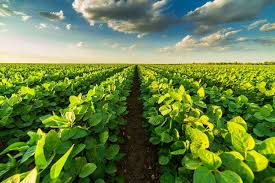Infiltration is the process by which precipitation moves downward through the surface of the earth and replenishes soil moisture, recharges acquifers, and ultimately supports streamflows during dry periods.
Along with interception, depression storage, and storm period evaporation, it determines the availability, if any, of the precipitation input for generating overland flows.
Furthermore, infiltration rates influence the timing of overland flow inputs to channelized systems. Accordingly, infiltration is an important component of any hydrological model.
Factors Influencing Infiltration
The rate at which infiltration occurs is influenced by several factors such as, the type and extent of vegetal cover, the condition of the surface crust, temperature, rainfall intensity, and physical properties of the soil.
Infiltration rates vary from one soil type to another. In very loose soil, e.g. sandy soils, the rate of infiltration is usually very high and lowest in clay soils because clay soils have very tiny particles, which make them compact.
The pores are smaller in size and number when compared with sandy soils. Soils act as a kind of giant sponge containing passages and caverns of various sizes. The total space available for water and air in the soil is called porosity.

Infiltration is a function of porosity. The passage of water from soil surface to stream banks or water conducting rocks (acquifers) takes place in a very tortuous way through small diameter passages. So, it is not surprising that water movement within the soil is slow.
Most soils are on sloping lands and so soil water movement takes place towards the slope base in a process called the through flow. The vertical movement of water in the soil is however called percolation. The degree of which is related to porosity of the soil.
The rate at which water is transmitted through the surface layer is highly dependent on the condition of the surface.
For example, inwash of fine material may seal the surface so that infiltration rates are low even when the underlying soils are highly permeable. After water crosses the surface interface, its rate of downward movement is controlled by the transmission characteristics of the underlying soil profile. The volume of storage available below ground is also a factor affecting infiltration rates.
Measurement of Infiltration
Hydrograph analyses and infiltrometer studies are some of the commonly used methods for determining infiltration capacity. Hydrograph is a graph which represents the changes in the level of water with time.
Estimates of infiltration based on hydrograph analyses have the advantage over infiltrometers of relating more directly to prevailing conditions of precipitation and field. They are however, not better than the precision with which rainfall and runoff are measured. Of special importance in such studies is the areal variability of rainfall.
Infiltrometers are usually classified as rainfall stimulators or flooding devices. In the former, artificial rainfall is simulated over a test plot and the infiltration is calculated from observations of rainfall and runoff, with consideration given to depression storage and surface detention.
Flooding infiltrometers are usually rings or tubes inserted in the ground. Water is applied and maintained at a constant level and observations are made of the rate of replenishment required. It should be noted that several other methods for measuring infiltration have been developed and are currently in use.
Read Also : Methods of Disposal of Waste Pesticide Containers
In summary, from the above discussions, it has been revealed that the study of infiltration is very vital in hydrologic studies. Its importance can be found in the determination of soil moisture, aquifer recharge, and support to stream flow during dry season. In addition, it can be used to determine runoff and erosion.
Infiltration is the process by which precipitation moves downward through the surface of the earth. Some of the factors that influence infiltration are physical properties of the soil, vegetal cover, rainfall intensity, and nature of the surface crust.
Infiltration capacity is commonly measured with the aid of hydrograph analyses and infiltrometer studies.

